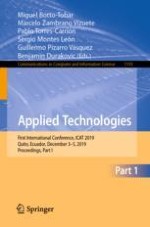2020 | OriginalPaper | Buchkapitel
Mechanical Pain Assessment Through Parameters Derived from Photoplethysmographic (PPG) Signals: A Pilot Study
verfasst von : Andrés David Ramírez Mena, Leonardo Antonio Bermeo Varón, Rodolfo Molano Valencia, Erick Javier Argüello Prada
Erschienen in: Applied Technologies
Aktivieren Sie unsere intelligente Suche, um passende Fachinhalte oder Patente zu finden.
Wählen Sie Textabschnitte aus um mit Künstlicher Intelligenz passenden Patente zu finden. powered by
Markieren Sie Textabschnitte, um KI-gestützt weitere passende Inhalte zu finden. powered by
